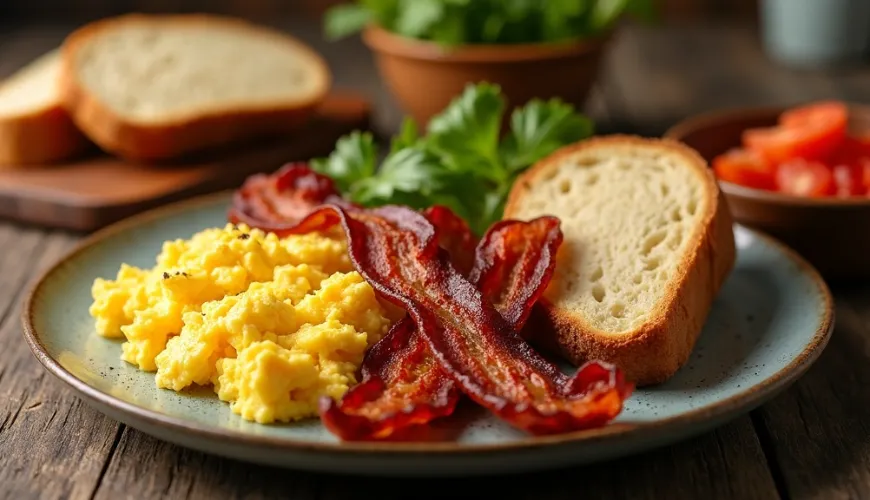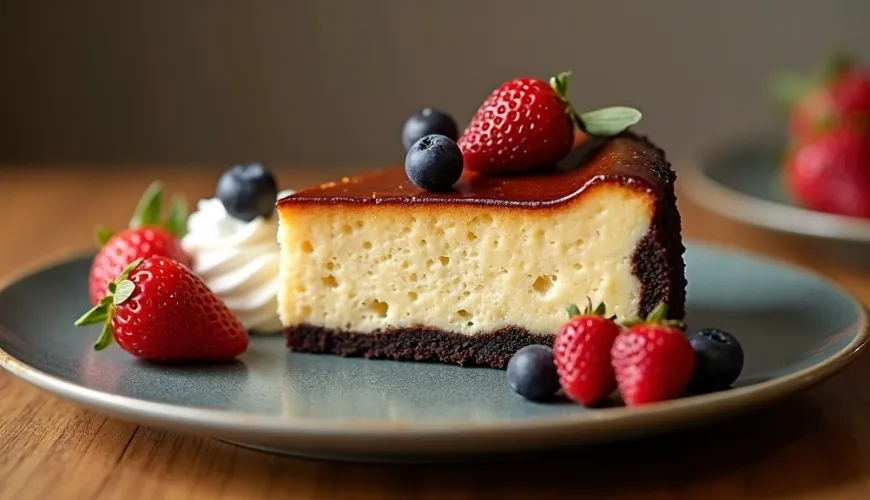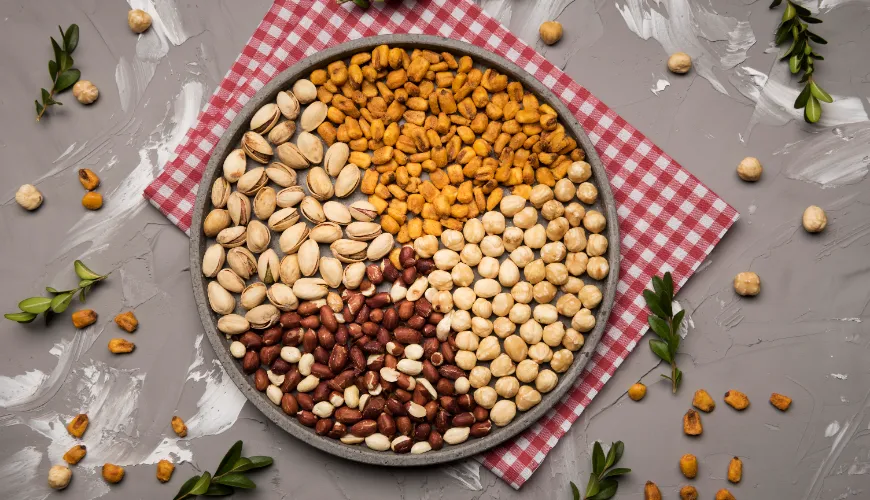
Why the Basque Cheesecake is So Popular and How to Improve It

The Secret of Basque Cheesecake - the Burnt Cake that has Captivated the World
At first glance, it may look like a culinary mishap. The surface is as dark as midnight, cracked, almost burnt. Yet the Basque cheesecake is one of the most sought-after desserts in recent years. Its exotic name and unconventional appearance attract both the curious and experienced gourmets. But what is actually behind this culinary sensation, and why is it gaining increasing popularity?
The Basque burnt cheesecake, as it is often called, originates from the Spanish Basque Country, specifically from the city of San Sebastián. It began being baked at the renowned restaurant La Viña back in the late 1990s, but it has only gained international fame in the last decade. And it is precisely its "flaws" that make it irresistible. While a classic cheesecake is baked slowly to remain light and compact, the Basque cheesecake is baked at high temperatures, causing its surface to literally burn – or rather caramelize.
However, it is not just any ordinary burning. The dark brown crust conceals a creamy, almost liquid core that melts on the tongue. The contrast of textures and flavors is what makes it an exceptional experience. And the best part? You don't need complex ingredients or pastry skills to make it.
Simple Recipe, Stunning Result
The recipe for Basque cheesecake is surprisingly simple. You only need a few basic ingredients: cream cheese (e.g., Philadelphia type), cream, eggs, sugar, and a bit of flour. Everything is mixed into a smooth cream and poured into a baking form lined with parchment paper, which can easily overhang the edges – this casual appearance is typical for Basque cheesecake.
The key to baking is using a high temperature – usually around 210–220 °C. This allows the top to quickly caramelize and darken without the inside being fully baked. The result is a dessert that has a fantastic balance between a slightly bitter crust and a sweet, soft center.
There is no single correct way to serve Basque cheesecake. Some let it cool completely and serve it chilled, while others slice it while still warm, letting the inside literally flow onto the plate. The truth is that each way has its charm and is worth trying.
Why is the "Burnt" Cheesecake so Popular?
Maybe it is its unconventional appearance. At a time when social media dictates trends and aesthetics often play a bigger role than taste, the Basque cheesecake feels like a rebel. It is imperfect, cracked, dark – and yet people love it. It shows that beauty is not always in smooth frosting and precise decoration.
Another reason for its popularity lies in its texture. Anyone who loves desserts that literally melt on the tongue will fall in love with Basque cheesecake at the first bite. It's like a crème brûlée wrapped in dough. Moreover, the absence of a butter cookie crust, which is common in classic cheesecakes, highlights the pure taste of the cheese cream.
Lastly, it's about versatility. Although the basic recipe is simple and great on its own, it offers countless variations. Some add vanilla to the batter, others a pinch of salt or lemon zest. Versions with caramel, chocolate, or fruit are also popular. Everyone can create their own Basque cheesecake recipe according to their taste.
Real-life Inspiration
One of the reasons why Basque cheesecake became such a phenomenon is its presence in cafes and bistros worldwide. In Prague, you can find it in the café Místo in Dejvice or the popular Vnitroblock. It was there that a young food blogger, Tereza, once tried it. She was surprised at how something that looked so "burnt" could taste so sophisticated. The next day she was already trying the recipe at home – and since then, she bakes Basque cheesecake for every family celebration. Her experience shows that this dessert is not just trendy but also practical. It can be prepared in advance, lasts for several days, and appeals to all age groups.
Where Did it Come From and Where is it Going?
Although it may seem like the Basque cheesecake is a modern invention, its roots go back to traditional Basque cuisine, known for its connection to local ingredients and emphasis on flavor. At the restaurant La Viña, they still prepare it the same way – without unnecessary improvements and decorations. It is proof that quality ingredients and an honest approach in the kitchen still prevail.
Interestingly, this dessert has to some extent become a cultural symbol. During the Covid-19 pandemic, it became a hit in home baking – probably due to its simplicity and ability to please even demanding taste buds. Like banana bread or homemade sourdough bread, it has become part of our shared culinary story.
What to Watch Out For and How to Enhance It?
When preparing Basque cheesecake, it's important to let it cool enough before slicing – unless you intend to create a dessert with a liquid center. Some recipes recommend chilling overnight in the fridge, while others claim it's best when still slightly warm. It's a matter of taste. It's also important not to overdo the baking – the crust should be dark, not black. It's always better to rely on appearance and consistency rather than the exact time in the recipe.
Those who like to experiment can try adding a bit of smoked salt to the batter or serving the cheesecake with fruit sauce – for example, from raspberries or sour cherries. It also tastes great with lightly sweetened sour cream or whipped cream.
The Basque cheesecake recipe can also be adapted to a vegan version – for example, using plant-based cream cheese and coconut cream. Even without eggs and milk, a rich and tasty dessert can be created that will please even those avoiding animal products. Many bloggers and chefs today strive to create alternatives that retain the character of the original but are gentle on the planet.
Basque Cheesecake as a New Classic Dessert?
While some culinary trends disappear as quickly as they appear, the Basque cheesecake seems to be a permanent addition to our kitchens. It offers a perfect combination of simplicity, elegance, and flavors that never tire. Whether you serve it as a dessert after a festive dinner or bake it just for an afternoon coffee, it's likely to become a regular part of your repertoire.
As one New York food critic aptly noted: "The Basque cheesecake is like jazz – a bit chaotic on the surface, but perfectly harmonious inside." And it is this harmony, born from contrast, that is its secret. It may not be beautiful in the sense of a shop window cake, but it captivates with its authenticity.
In a time when so many people strive to live consciously and appreciate quality over quantity, the Basque burnt cheesecake becomes a symbol of a return to simplicity. It teaches us that beauty can be found in imperfection and that even a burnt top can hide something extraordinary.

